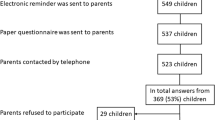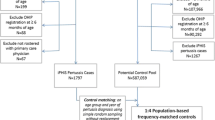Abstract
Pertussis is a common vaccine-preventable disease (VPD) worldwide. Its reported incidence has increased steadily in the United States, where it is endemic. Tetanus is a rare but potentially fatal VPD. Foreign-born adults have lower tetanus–diphtheria–pertussis (Tdap) and tetanus–diphtheria (Td) vaccination coverage than do U.S.-born adults. We studied the association of migration-related, socio-demographic, and access-to-care factors with Tdap and Td vaccination among foreign-born adults living in the United States. The 2012 and 2013 National Health Interview Survey data for foreign-born respondents were analyzed. Multivariable logistic regression was conducted to calculate prevalence ratios and 95% confidence intervals, and to identify variables independently associated with Tdap and Td vaccination among foreign-born adults. Tdap and Td vaccination status was available for 9316 and 12,363 individuals, respectively. Overall vaccination coverage was 9.1% for Tdap and 49.8% for Td. Younger age, higher education, having private health insurance (vs. public insurance or uninsured), having visited a doctor in the previous year, and region of residence were independently associated with Tdap and Td vaccination. Among those reporting a doctor visit, two-thirds had not received Tdap. This study provides further evidence of the need to enhance access to health care and immunization services and reduce missed opportunities for Tdap and Td vaccination for foreign-born adults in the United States. These findings apply to all foreign-born, irrespective of their birthplace, citizenship, language and years of residence in the United States. Addressing vaccination disparities among the foreign-born will help achieve national vaccination goals and protect all communities in the United States.
Similar content being viewed by others
References
Black, R. E., Cousens, S., Johnson, H. L., et al. (2010). Global, regional, and national causes of child mortality in 2008: A systematic analysis. Lancet, 375(9730), 1969–1987.
Centers for Disease Control and Prevention. (2014). Pertussis surveillance and reporting -cases by year (1922–2013). Retrieved January 12, 2015, from http://www.cdc.gov/pertussis/surv-reporting/cases-by-year.html.
Centers for Disease Control and Prevention. (2013). Notice to readers: Final 2012 reports of nationally notifiable infectious diseases. MMWR, 62(33), 669–682.
Centers for Disease Control and Prevention. (2014). Pertussis Outbreak Trends. Source: National Center for Immunization and Respiratory Diseases, Division of Bacterial Diseases. Retrieved January 10, 2015, from http://www.cdc.gov/pertussis/outbreaks/trends.html.
California Department of Public Health. (2015). Pertussis summary report 2015-1-7. Retrieved January 16, 2015, fromhttp://www.cdph.ca.gov/programs/immunize/Documents/Pertussis_Report_1-7-2015.pdf.
Centers for Disease Control and Prevention. (2014). Notice to readers: Final 2013 reports of nationally notifiable infectious diseases. MMWR, 63(32), 702–715.
Wendelboe, A. M., Njamkepo, E., Bourillon, A., et al. (2007). Transmission of Bordetella pertussis to young infants. The Pediatric Infectious Disease Journal, 26(4), 293–299.
Wiley, K. E., Zuo, Y., Macartney, K. K., & Mcintyre, P. B. (2013). Sources of pertussis infection in young infants: A review of key evidence informing targeting of the cocoon strategy. Vaccine, 31(4), 618–625.
Perret, C., Viviani, T., Peña, A., Abarca, K., & Ferrés, M. (2011). Source of infection in young infants hospitalized with Bordetella pertussis. Revista Medica de Chile, 139(4), 448–454.
De greeff, S. C., Mooi, F. R., Westerhof, A., et al. (2010). Pertussis disease burden in the household: How to protect young infants. Clinical Infectious Diseases, 50(10), 1339–1345.
WHO vaccine-preventable diseases: Monitoring system. 2014 global summary. World Health Organization, 2014. http://apps.who.int/immunization_monitoring/globalsummary/countries?countrycriteria%5Bcountry%5D%5B%5D=USA.
Tiwari, T., Clark, T. A., Messonnier, N.E., & Thomas, C. G. (2011). Tetanus surveillance—United States, 2001–2008. MMWR, 60(12), 365–369.
Kim, D. K., Bridges, C.B., Harriman, K. H. (2015). Advisory Committee on Immunization Practices recommended immunization schedule for adults aged 19 years or older: United States, 2015. Annals of internal medicine, 162, 214–223.
Williams, W. W., Lu, P. J., O’halloran, A., et al. (2014). Noninfluenza vaccination coverage among adults—United States, 2012. MMWR, 63(5), 95–102.
Williams, W. W., Lu, P. J., O’halloran, A., et al. (2015). Vaccination coverage among adults, excluding influenza vaccination—United States, 2013. MMWR, 64(4), 95–102.
Lu, P. J., Rodriguez-Lainz, A., O’halloran, A., Greby, S., & Williams, W. W. (2014). Adult vaccination disparities among foreign-born populations in the U.S., 2012. American Journal of Preventive Medicine, 47(6), 722–733.
Miller, B. L., Ahmed, F., Lu, P. J., et al. (2010). Tetanus and pertussis vaccination coverage among adults aged ≥18 years—United States, 1999 and 2008. MMWR, 59(40), 1302–1306.
Lu, P.J., O’Halloran, A., Ding, H., Liang, J. L., Williams, W. W. (2015). National and state-specific td and tdap vaccination of adult populations. The American Journal of Preventive Medicine. doi:10.1016/j.amepre.2015.09.033.
Table 1. Annual Estimates of the Resident Population for the United States, Regions, States, and Puerto Rico: April 1 2010 to July 1, 2014 (NST-EST2014-01) Source: U.S. Census Bureau, Population Division. Release Date: December 2014.
Table 2. Projections of the Population by Nativity for the United States: 2015–2060 (NP2014-T2) Source: U.S. Census Bureau, Population Division. Release Date: December 2014.
Quick Fact Beta Table. Source: U.S. Census Bureau. Foreign-born persons, percent, 2009–2013. Retrieved January 12, 2015, fromhttp://www.census.gov/quickfacts/table/PST045214/00.
WHO vaccine-preventable diseases: Monitoring system. 2015 global summary. World Health Organization, 2015. http://apps.who.int/immunization_monitoring/globalsummary/schedules.
Chiappini E, Stival A, Galli L, De Martino, M. (2013). Pertussis re-emergence in the post-vaccination era. BMC Infectious Diseases, 13:151. http://www.biomedcentral.com/1741-2334/13/151.
Beltrán silva, S., Cervantes Apolinar, Y., Cherry, J. D., et al. (2011). Consensus on the clinical and microbiologic diagnosis of Bordetella pertussis, and infection prevention. Expert Group on Pertussis Vaccination. Salud publica de Mexico, 53(1), 57–65.
Suárez-Idueta, L., Herbas-Rocha, I., Gómez- Altamirano, C., & Richardson-López, V. (2012). Tos ferina, un problema vigente de salud pública en México: Planteamiento de la necesidad para introducir una nueva vacuna. Boletín médico del Hospital Infantil de México, 69(4), 314–20.
Centers for Disease Control and Prevention (CDC). National Health Interview Survey. Retrieved December 17, 2014, from http://www.cdc.gov/nchs/nhis/quest_data_related_1997_forward.htm.
U.S. Census Bureau. Poverty thresholds. http://www.census.gov/hhes/www/poverty/data/threshld/.
Shah, B., Barnwell, B., & Bieier, G. (2010). SUDAAN user’s manual, release 10.1. Research Triangle Park, NC: Research Triangle Institute.
Suryadevara, M., Bonville, C. A., Cibula, D. A., et al. (2014). Pertussis vaccine for adults: Knowledge, attitudes, and vaccine receipt among adults with children in the household. Vaccine, 32(51), 7000–7004.
Centers for Disease Control and Prevention. (1991). Diphtheria, tetanus, and pertussis: Recommendations for vaccine use and other preventive measures: Recommendations of the Immunization Practices Advisory Committee (ACIP). MMWR. 40(No. RR-10), 1–28.
The Joint Commission, Mission. (2011). Tdap Vaccination Strategies for Adolescents and Adults, Including Health Care Personnel Strategies from Research and Practice. http://www.jointcommission.org/assets/1/6/Tdap_Monograpgh.pdf.
Lu, P. J., Graitcer, S. B., O’Halloran, A., & Liang, J. L. (2014). Tetanus, diphtheria and acellular pertussis (Tdap) vaccination among healthcare personnel-United States, 2011. Vaccine, 32(5), 572–578.
Miller, B., Kretsinger, K., Euler, G., et al. (2011). Barriers to early uptake of tetanus, diphtheria and acellular pertussis vaccine (Tdap) among adults—United States, 2005–2007. Vaccine, 29(22), 3850–3856.
Lu, P. J., Euler, G. L., & Harpaz, R. (2011). Herpes zoster vaccination among adults aged 60 years and older, in the U.S., 2008. American Journal of Preventive Medicine, 40, e1–e6.
Lu, P. J., & Nuorti, J. P. (2010). Pneumococcal polysaccharide vaccination among adults aged 65 years and older, U.S., 1989–2008. American Journal of Preventive Medicine, 39, 287–295.
Madhavan, S. S., Rosenbluth, S. A., Amonkar, M., Fernandes, A., & Borker, R. (2003). Immunization predictors in rural adults under 65 years of age. Journal of Health Care for the Poor and Underserved, 14(1):100–21.
Housey, M., Zhang, F., Miller, C., et al (2014). Vaccination with tetanus, diphtheria, and acellular pertussis vaccine of pregnant women enrolled in Medicaid–Michigan, 2011–2013. MMWR, 63(38), 839–842.
Singer, D. C., Davis, M. M., Gebremariam, A., & Clark, S. J. (2012). Underinsurance for recently recommended vaccines in private health plans. The Journal of Community Health, 37(6):1164–67.
O’Leary, S. T., Allison, M. A., Lindley, M. C., et al. (2014). Vaccine financing from the perspective of primary care physicians. Pediatrics, 133(3):367–74.
U.S Department of Health and Human Services, The Affordable Care Act and Immunization. (2012). http://www.hhs.gov/healthcare/facts/factsheets/2010/09/The-Affordable-Care-Act-and-Immunization.html.
Skowronski, D., Pielak, K., Remple, V., et al. (2004). Adult tetanus, diphtheria and pertussis immunization: Knowledge, beliefs, behavior and anticipated uptake. Vaccine, 23(3), 353–361.
Rolnick, S. J., Parker, E. D., Nordin, J. D., et al. (2013). Self-report compared to electronic medical record across eight adult vaccines: Do results vary by demographic factors? Vaccine, 31, 3928–3935.
Task Force on Community Preventive Services. (2015). Guide to Community Preventive Services. Increasing appropriate vaccination. Retrieved August 14, 2015, from http://www.thecommunityguide.org/vaccines/index.html.
Health Care Financing Administration. (1999). Evidence report and evidence-based recommendations: Interventions that increase the utilization of medicare-funded preventive service for persons age 65 and older. Baltimore, MA: Health Care Financing Administration.
Table 3.1 Foreign-Born Population by Sex, Age, and World Region of Birth: 2013. Source: U.S. Census Bureau, Population Division. https://www.census.gov/population/foreign/data/cps2013.html.
Author information
Authors and Affiliations
Corresponding author
Ethics declarations
Conflict of interest
The authors certify that they have NO affiliations with or involvement in any organization or entity with any financial interest (such as honoraria; educational grants; participation in speakers’ bureaus; membership, employment, consultancies, stock ownership, or other equity interest; and expert testimony or patent-licensing arrangements), or non-financial interest (such as personal or professional relationships, affiliations, knowledge or beliefs) in the subject matter or materials discussed in this manuscript.
Disclosure
The findings and conclusions in this article are those of the authors and do not necessarily represent the official position of the Centers for Disease Control and Prevention.
Rights and permissions
About this article
Cite this article
Sánchez-González, L., Rodriguez-Lainz, A., O’Halloran, A. et al. Factors Related to Pertussis and Tetanus Vaccination Status Among Foreign-Born Adults Living in the United States. J Community Health 42, 573–582 (2017). https://doi.org/10.1007/s10900-016-0290-7
Published:
Issue Date:
DOI: https://doi.org/10.1007/s10900-016-0290-7




